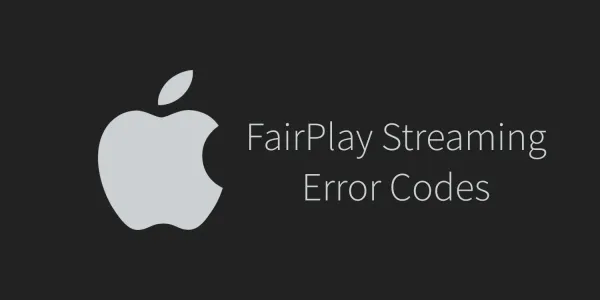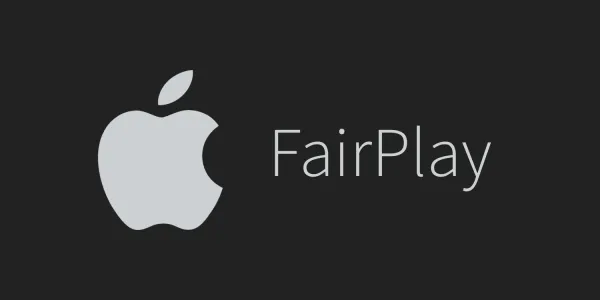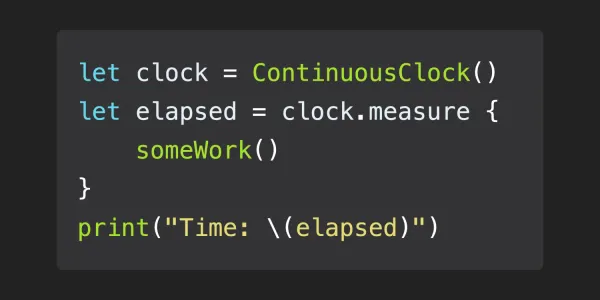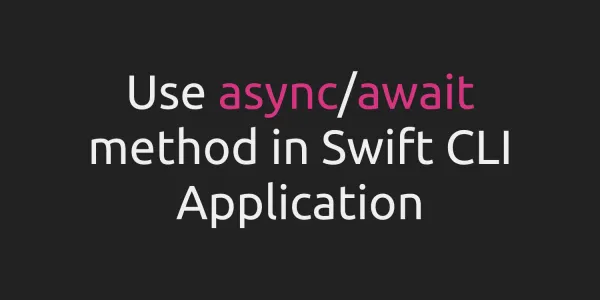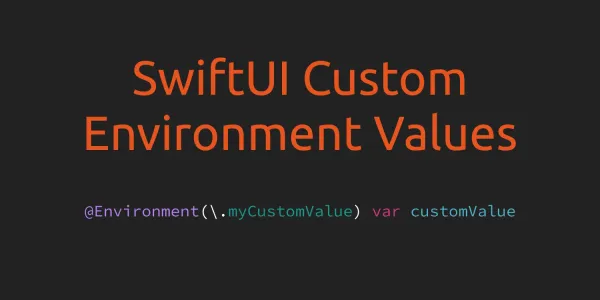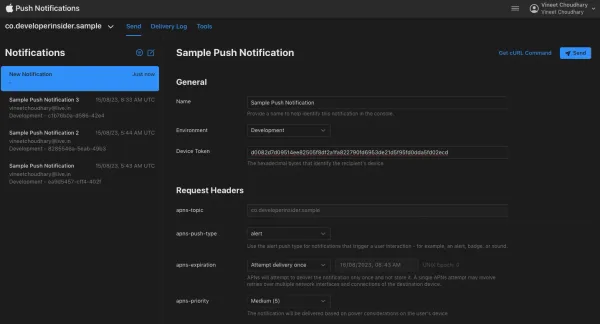Swift offers the programmer a rich assortment of built-in as well as user-defined data types. The following types of basic data types are most frequently when declaring variables −
Integers
Integers are whole numbers with no fractional component, such as 42 and -23. Integers are either signed (positive, zero, or negative) or unsigned (positive or zero).
Swift provides signed and unsigned integers in 8, 16, 32, and 64 bit forms. These integers follow a naming convention similar to C, in that an 8-bit unsigned integer is of type UInt8, and a 32-bit signed integer is of type Int32. Like all types in Swift, these integer types have capitalized names.
Integer Bounds
You can access the minimum and maximum values of each integer type with its min and max properties:
let minValue = UInt8.min // minValue is equal to 0, and is of type UInt8
let maxValue = UInt8.max // maxValue is equal to 255, and is of type UInt8
The values of these properties are of the appropriate-sized number type (such as UInt8 in the example above) and can therefore be used in expressions alongside other values of the same type.
Int
In most cases, you don’t need to pick a specific size of integer to use in your code. Swift provides an additional integer type, Int, which has the same size as the current platform’s native word size:
- On a 32-bit platform, Int is the same size as Int32.
- On a 64-bit platform, Int is the same size as Int64.
Unless you need to work with a specific size of integer, always use Int for integer values in your code. This aids code consistency and interoperability. Even on 32-bit platforms, Int can store any value between -2,147,483,648 and 2,147,483,647, and is large enough for many integer ranges.
UInt
Swift also provides an unsigned integer type, UInt, which has the same size as the current platform’s native word size:
- On a 32-bit platform, UInt is the same size as UInt32.
- On a 64-bit platform, UInt is the same size as UInt64.
Floating-Point Numbers
Floating-point numbers are numbers with a fractional component, such as 3.14159, 0.1, and -273.15.
Floating-point types can represent a much wider range of values than integer types, and can store numbers that are much larger or smaller than can be stored in an Int. Swift provides two signed floating-point number types:
- Double represents a 64-bit floating-point number.
- Float represents a 32-bit floating-point number.
Type Safety and Type Inference
Swift is a type-safe language. A type safe language encourages you to be clear about the types of values your code can work with. If part of your code expects a String, you can’t pass it an Int by mistake.
Because Swift is type safe, it performs type checks when compiling your code and flags any mismatched types as errors. This enables you to catch and fix errors as early as possible in the development process.
Type-checking helps you avoid errors when you’re working with different types of values. However, this doesn’t mean that you have to specify the type of every constant and variable that you declare. If you don’t specify the type of value you need, Swift uses type inference to work out the appropriate type. Type inference enables a compiler to deduce the type of a particular expression automatically when it compiles your code, simply by examining the values you provide.
let meaningOfLife = 42
// meaningOfLife is inferred to be of type Int
Likewise, if you don’t specify a type for a floating-point literal, Swift infers that you want to create a Double:
let pi = 3.14159
// pi is inferred to be of type Double
Swift always chooses Double (rather than Float) when inferring the type of floating-point numbers.
If you combine integer and floating-point literals in an expression, a type of Double will be inferred from the context:
let anotherPi = 3 + 0.14159
// anotherPi is also inferred to be of type Double
The literal value of 3 has no explicit type in and of itself, and so an appropriate output type of Double is inferred from the presence of a floating-point literal as part of the addition.
Numeric Literals
Integer literals can be written as:
- A decimal number, with no prefix
- A binary number, with a 0b prefix
- An octal number, with a 0o prefix
- A hexadecimal number, with a 0x prefix
All of these integer literals have a decimal value of 17:
let decimalInteger = 17
let binaryInteger = 0b10001 // 17 in binary notation
let octalInteger = 0o21 // 17 in octal notation
let hexadecimalInteger = 0x11 // 17 in hexadecimal notation
Floating-point literals can be decimal (with no prefix), or hexadecimal (with a 0x prefix). They must always have a number (or hexadecimal number) on both sides of the decimal point. Decimal floats can also have an optional exponent, indicated by an uppercase or lowercase e; hexadecimal floats must have an exponent, indicated by an uppercase or lowercase p.
For decimal numbers with an exponent of exp, the base number is multiplied by 10exp:
- 1.25e2 means 1.25 x 102, or 125.0.
- 1.25e-2 means 1.25 x 10-2, or 0.0125.
For hexadecimal numbers with an exponent of exp, the base number is multiplied by 2exp:
- 0xFp2 means 15 x 22, or 60.0.
- 0xFp-2 means 15 x 2-2, or 3.75.
All of these floating-point literals have a decimal value of 12.1875:
let decimalDouble = 12.1875
let exponentDouble = 1.21875e1
let hexadecimalDouble = 0xC.3p0
Numeric literals can contain extra formatting to make them easier to read. Both integers and floats can be padded with extra zeros and can contain underscores to help with readability. Neither type of formatting affects the underlying value of the literal:
let paddedDouble = 000123.456
let oneMillion = 1_000_000
let justOverOneMillion = 1_000_000.000_000_1
Numeric Type Conversion
Integer Conversion
The range of numbers that can be stored in an integer constant or variable is different for each numeric type. An Int8 constant or variable can store numbers between -128 and 127, whereas a UInt8 constant or variable can store numbers between 0 and 255. A number that will not fit into a constant or variable of a sized integer type is reported as an error when your code is compiled:
let cannotBeNegative: UInt8 = -1
// UInt8 cannot store negative numbers, and so this will report an error
let tooBig: Int8 = Int8.max + 1
// Int8 cannot store a number larger than its maximum value,
// and so this will also report an error
Because each numeric type can store a different range of values, you must opt in to numeric type conversion on a case-by-case basis. This opt-in approach prevents hidden conversion errors and helps make type conversion intentions explicit in your code.
To convert one specific number type to another, you initialize a new number of the desired type with the existing value. In the example below, the constant twoThousand is of type UInt16, whereas the constant one is of type UInt8. They cannot be added together directly, because they are not of the same type. Instead, this example calls UInt16(one) to create a new UInt16 initialized with the value of one, and uses this value in place of the original:
let twoThousand: UInt16 = 2_000
let one: UInt8 = 1
let twoThousandAndOne = twoThousand + UInt16(one)
Because both sides of the addition are now of type UInt16, the addition is allowed. The output constant (twoThousandAndOne) is inferred to be of type UInt16, because it is the sum of two UInt16 values.
SomeType(ofInitialValue) is the default way to call the initializer of a Swift type and pass in an initial value.
Integer and Floating-Point Conversion
Conversions between integer and floating-point numeric types must be made explicit:
let three = 3
let pointOneFourOneFiveNine = 0.14159
let pi = Double(three) + pointOneFourOneFiveNine
// pi equals 3.14159, and is inferred to be of type Double
Here, the value of the constant three is used to create a new value of type Double, so that both sides of the addition are of the same type. Without this conversion in place, the addition would not be allowed.
Floating-point to integer conversion must also be made explicit. An integer type can be initialized with a Double or Float value:
let integerPi = Int(pi)
// integerPi equals 3, and is inferred to be of type Int
Floating-point values are always truncated when used to initialize a new integer value in this way. This means that 4.75 becomes 4, and -3.9 becomes -3.
Type Aliases
Type aliases define an alternative name for an existing type. You define type aliases with the typealias keyword.
Type aliases are useful when you want to refer to an existing type by a name that is contextually more appropriate, such as when working with data of a specific size from an external source:
typealias AudioSample = UInt16
Once you define a type alias, you can use the alias anywhere you might use the original name:
var maxAmplitudeFound = AudioSample.min
// maxAmplitudeFound is now 0
Here, AudioSample is defined as an alias for UInt16. Because it is an alias, the call to AudioSample.min actually calls UInt16.min, which provides an initial value of 0 for the maxAmplitudeFound variable.
Booleans
Swift has a basic Boolean type, called Bool. Boolean values are referred to as logical, because they can only ever be true or false. Swift provides two Boolean constant values, true and false:
let orangesAreOrange = true
let turnipsAreDelicious = false
The types of orangesAreOrange and turnipsAreDelicious have been inferred as Bool from the fact that they were initialized with Boolean literal values. As with Int and Double above, you don’t need to declare constants or variables as Bool if you set them to true or false as soon as you create them. Type inference helps make Swift code more concise and readable when it initializes constants or variables with other values whose type is already known.
Boolean values are particularly useful when you work with conditional statements such as the if statement:
if turnipsAreDelicious {
print("Mmm, tasty turnips!")
} else {
print("Eww, turnips are horrible.")
}
// Prints "Eww, turnips are horrible."
Conditional statements such as the if statement are covered in more detail in Control Flow.
Swift’s type safety prevents non-Boolean values from being substituted for Bool. The following example reports a compile-time error:
let i = 1
if i {
// this example will not compile, and will report an error
}
However, the alternative example below is valid:
let i = 1
if i == 1 {
// this example will compile successfully
}
The result of the i == 1 comparison is of type Bool, and so this second example passes the type-check.
Tuples
Tuples group multiple values into a single compound value. The values within a tuple can be of any type and do not have to be of the same type as each other.
In this example, (404, "Not Found") is a tuple that describes an HTTP status code. An HTTP status code is a special value returned by a web server whenever you request a web page. A status code of 404 Not Found is returned if you request a webpage that doesn’t exist.
let http404Error = (404, "Not Found")
// http404Error is of type (Int, String), and equals (404, "Not Found")
The (404, "Not Found") tuple groups together an Int and a String to give the HTTP status code two separate values: a number and a human-readable description. It can be described as “a tuple of type (Int, String)”.
You can create tuples from any permutation of types, and they can contain as many different types as you like. There’s nothing stopping you from having a tuple of type (Int, Int, Int), or (String, Bool), or indeed any other permutation you require.
You can decompose a tuple’s contents into separate constants or variables, which you then access as usual:
let (statusCode, statusMessage) = http404Error
print("The status code is \(statusCode)")
// Prints "The status code is 404"
print("The status message is \(statusMessage)")
// Prints "The status message is Not Found"
If you only need some of the tuple’s values, ignore parts of the tuple with an underscore (_) when you decompose the tuple:
let (justTheStatusCode, _) = http404Error
print("The status code is \(justTheStatusCode)")
// Prints "The status code is 404"
Alternatively, access the individual element values in a tuple using index numbers starting at zero:
print("The status code is \(http404Error.0)")
// Prints "The status code is 404"
print("The status message is \(http404Error.1)")
// Prints "The status message is Not Found"
You can name the individual elements in a tuple when the tuple is defined:
let http200Status = (statusCode: 200, description: "OK")
If you name the elements in a tuple, you can use the element names to access the values of those elements:
print("The status code is \(http200Status.statusCode)")
// Prints "The status code is 200"
print("The status message is \(http200Status.description)")
// Prints "The status message is OK"
Tuples are particularly useful as the return values of functions. A function that tries to retrieve a web page might return the (Int, String) tuple type to describe the success or failure of the page retrieval. By returning a tuple with two distinct values, each of a different type, the function provides more useful information about its outcome than if it could only return a single value of a single type.
Optionals
You use optionals in situations where a value may be absent. An optional represents two possibilities: Either there is a value, and you can unwrap the optional to access that value, or there isn’t a value at all.
Here’s an example of how optionals can be used to cope with the absence of a value. Swift’s Int type has an initializer which tries to convert a String value into an Int value. However, not every string can be converted into an integer. The string "123" can be converted into the numeric value 123, but the string "hello, world" does not have an obvious numeric value to convert to.
The example below uses the initializer to try to convert a String into an Int:
let possibleNumber = "123"
let convertedNumber = Int(possibleNumber)
// convertedNumber is inferred to be of type "Int?", or "optional Int"
Because the initializer might fail, it returns an optional Int, rather than an Int. An optional Int is written as Int?, not Int. The question mark indicates that the value it contains is optional, meaning that it might contain some Int value, or it might contain no value at all. (It can’t contain anything else, such as a Bool value or a String value. It’s either an Int, or it’s nothing at all.)
nil
You set an optional variable to a valueless state by assigning it the special value nil:
var serverResponseCode: Int? = 404
// serverResponseCode contains an actual Int value of 404
serverResponseCode = nil
// serverResponseCode now contains no value
If you define an optional variable without providing a default value, the variable is automatically set to nil for you:
var surveyAnswer: String?
// surveyAnswer is automatically set to nil
NOTE - Swift’s nil is not the same as nil in Objective-C. In Objective-C, nil is a pointer to a nonexistent object. In Swift, nil is not a pointer—it is the absence of a value of a certain type. Optionals of any type can be set to nil, not just object types.
Optional Binding
You use optional binding to find out whether an optional contains a value, and if so, to make that value available as a temporary constant or variable. Optional binding can be used with if and while statements to check for a value inside an optional, and to extract that value into a constant or variable, as part of a single action. if and while statements are described in more detail in Control Flow.
Write an optional binding for an if statement as follows:
if let constantName = someOptional {
statements
}
let possibleNumber = "123"
if let actualNumber = Int(possibleNumber) {
print("\"\(possibleNumber)\" has an integer value of \(actualNumber)")
} else {
print("\"\(possibleNumber)\" could not be converted to an integer")
}
// Prints ""123" has an integer value of 123"
This code can be read as:
If the optional
Intreturned byInt(possibleNumber)contains a value, set a new constant calledactualNumberto the value contained in the optional.
If the conversion is successful, the actualNumber constant becomes available for use within the first branch of the if statement. It has already been initialized with the value contained within the optional, and so there is no need to use the ! suffix to access its value. In this example, actualNumber is simply used to print the result of the conversion.
You can use both constants and variables with optional binding. If you wanted to manipulate the value of actualNumber within the first branch of the if statement, you could write if var actualNumber instead, and the value contained within the optional would be made available as a variable rather than a constant.
You can include multiple optional bindings in a single if statement and use a where clause to check for a Boolean condition. If any of the values in the optional bindings are nil or the where clause evaluates to false, the whole optional binding is considered unsuccessful.
if let firstNumber = Int("4"), secondNumber = Int("42") where firstNumber < secondNumber {
print("\(firstNumber) < \(secondNumber)")
}
// Prints "4 < 42"
Implicitly Unwrapped Optionals
An implicitly unwrapped optional is a normal optional behind the scenes, but can also be used like a nonoptional value, without the need to unwrap the optional value each time it is accessed. The following example shows the difference in behavior between an optional string and an implicitly unwrapped optional string when accessing their wrapped value as an explicit String:
let possibleString: String? = "An optional string."
let forcedString: String = possibleString! // requires an exclamation mark
let assumedString: String! = "An implicitly unwrapped optional string."
let implicitString: String = assumedString // no need for an exclamation mark
You can think of an implicitly unwrapped optional as giving permission for the optional to be unwrapped automatically whenever it is used. Rather than placing an exclamation mark after the optional’s name each time you use it, you place an exclamation mark after the optional’s type when you declare it.

